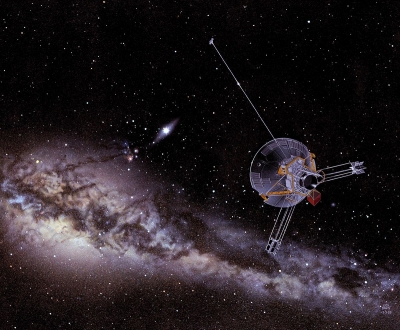
In December 2018, NASA’s Voyager 2 spacecraft reached interstellar space, following the example of its sister, Voyager 1. Right now, only five spacecraft have been launched capable of making such a grand exit, including the Voyagers. The remaining three are Pioneers 10 and 11, and New Horizons.
This milestone — reaching interstellar space — can be considered leaving the solar system by a certain definition. Let’s be clear about what that entails. In 1990, the New York Times reported that Pioneer was reported to leave the solar system when it flew past Neptune’s orbit. That’s not what Voyager 2’s scientists used to make their determination, however. Instead, the more recent measurements consider the crossing of the sun’s heliopause, the theoretical boundary to its heliosphere, to be the determining factor for entering interstellar space. The heliosphere is a bubble of charged particles created by and flowing past the sun. Scientists use it to mark where interstellar space begins.
But the heliosphere is tricky, and changes along with the sun’s 22-year solar cycle, shrinking and growing with the solar wind, and stretching out behind the sun in the star’s direction of travel. It’s not something easily measured from Earth. NASA’s Interstellar Boundary Explorer (IBEX) mission is working to remotely define the edges of the bubble.
Credit : Space.com
Picture Credit : Google




